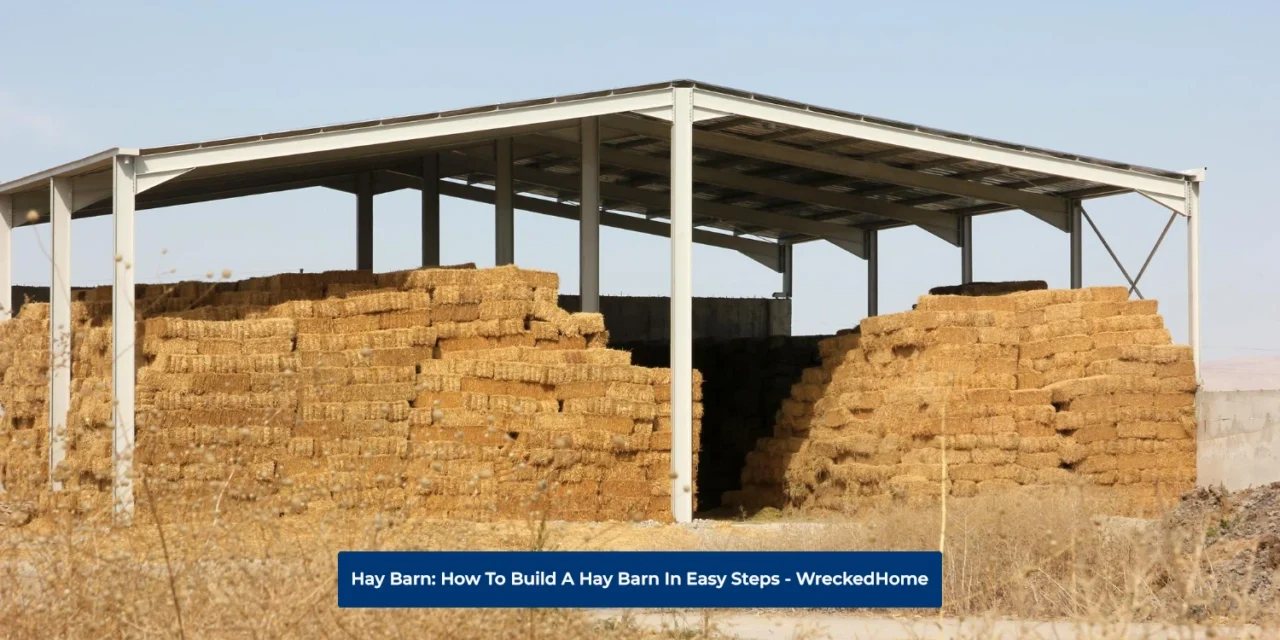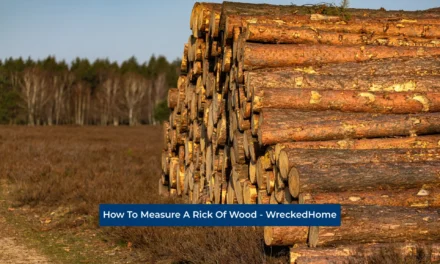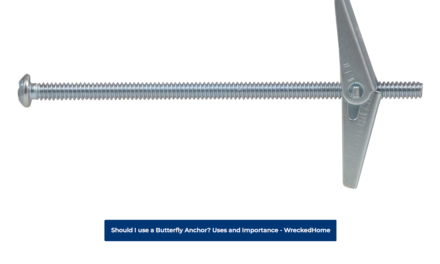Everyone knows the importance of Hay barn. Not only is it for storing Hay but it is also for livestock and farming equipment. Its importance demands that every farmer should know how to build one.
Building a hay barn is very difficult. If you follow this guide, the process should be much more simpler. Let’s discuss it.
What is a Hay Barn?
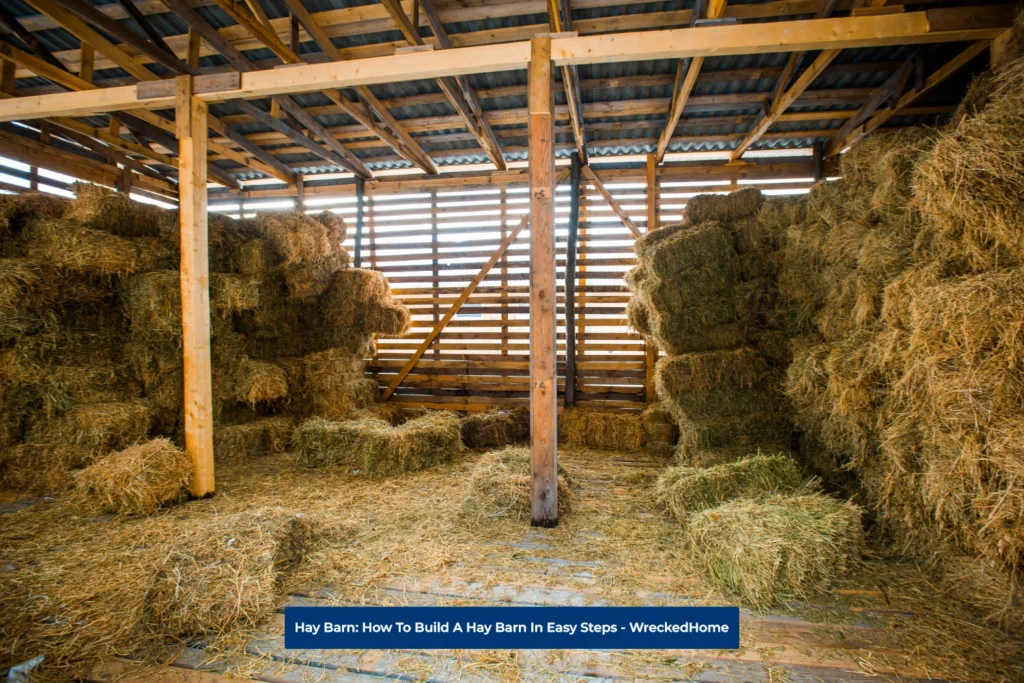
This Barn is a building for storing Hay made from dried grass which is an animal feed. Hay barns are typically seen on farms ranches and sometimes at horse stables and petting zoos.
It is typically made of wood, but people use other materials, like metal or concrete. Hay Barn has a large, open interior space where you can store Hay. It may also have lofts or upper levels that you can use for additional storage and other purposes including housing livestock or equipment. It is specially made to protect Hay from rain, snow and wind and keep it clean and free of pests.
Benefits of a Hay Barn
There are many benefits of having this type of barn. Let’s discuss them:
- These barns keep the Hay clean and protect it from worse weather conditions like rain, hail and snow. This also keeps it dry and mold-free.
- It keeps Hay free of pests such as rodents and insects. It is important to save the Hay from pests because they can contaminate the Hay and make it unsafe for animals to eat.
- Hay barn provide a safe and convenient place to store Hay is important mainly in the winter when animals need more Hay to eat.
- You can also use hay barn for other purposes such as housing livestock, equipment or feed.
Types of Hay Barns:
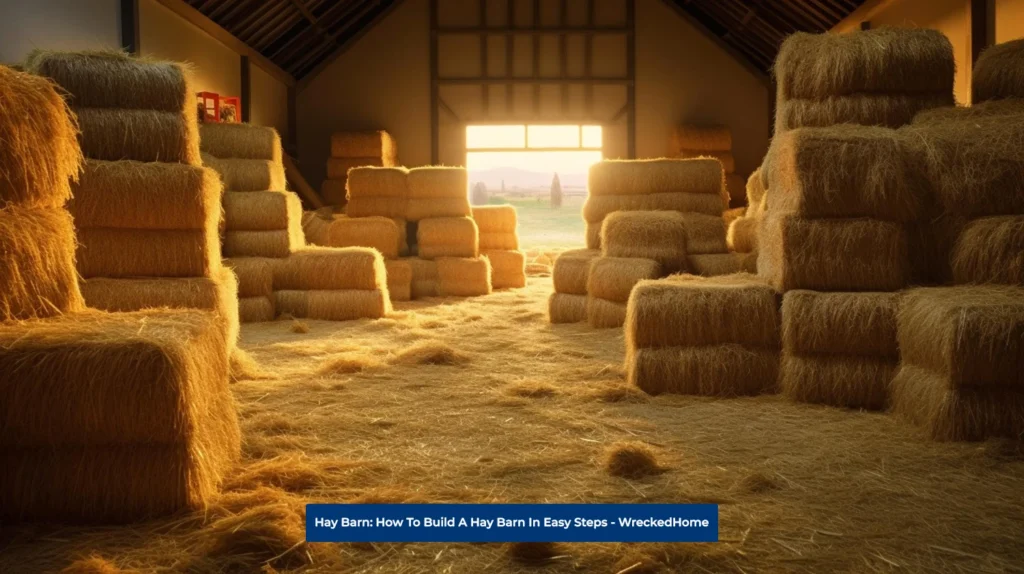
These barns come in different types and each has its own pros and cons. You can choose the barn type according to your specific needs. Such needs include the amount of Hay you want to store, type of terrain, and your budget. Let’s discuss the most prominent and common types:
Pole Barn:
A Pole barn is one of the most popular choices for Hay storage. It is mostly used because it is relatively less expensive and easy to build. It is made of wood or steel poles and has a metal roof. These can be open sided or closed, which one you select depends on your specific needs.
Bank Barn:
Bank barns are the only option for areas with limited space. These are built into the hillside. Bank Barns have two levels: one is the upper level that stores the Hay and the lower level for livestock and other purposes.
Gambrel Barns:
Gambrel Barns have a different roof that is broken into two slopes. As it is slightly larger than other types of barns, you can store a lot of Hay. They are the top choice for cold climates.
Dutch Barns:
These barns have a unique roof with two sections divided. The upper section of roof is more steep than the lower one. For storing Hay and livestock housing, most people use these Dutch barns.
Round Barns:
Round barns are made of wood or metal and have a conical roof. These are becoming popular because they are very efficient at storing Hay. It can be open sided and enclosed.
Shed Barns:
These barns have one side and have a single roof slope. Shed barns are a good option for hay storage in areas where we have limited space.
Monitor barns:
Monitor barns allow ventilation due to a raised section in the middle of the roof. In hot climates, Monitor barns are a good choice for storing Hay.
How to Choose the Right Hay Barn
You have to consider different factors while choosing hay barn, like
Size:
Size is an important factor when we choose a hay barn. It depends on how much Hay you want to store. The good option is to allow 250 cubic feet of storage space per ton for small square bales and 310 cubic feet per ton for large round bales.
Type:
When choosing a hay barn, remember about the types of Hay. Alfalfa is more susceptible to moisture than others, so choose a barn with a higher roof and more ventilation for it.
Climate:
Climates with lots of rain and snow need a barn with a sturdy roof and good drainage. So, choose barn according to your area’s climate conditions.
Budget:
These barns have different price ranges. It may cost you from few thousand to ten thousand dollars. It is important to set the budget before you choose the barn.
How to Build a Hay Barn
You can build a barn that stores hay yourself. Below, we will discussion how to build one.
Planning Your Barn:
When you plan a Hay barn, consider some necessary factors including:
Location:
Choose a barn location that is dry and high. Pick places that are away from areas prone to flooding and water runoff. It should be in places that are easy to access with farm equipment.
Size:
Size also matters in planning a hay barn. Choose the size according to your hay storage needs. It can be 250 cubic feet of storage space per ton for small square bales and 310 cubic feet per ton for large round bales.
Ventilation:
These barns need good ventilation to prevent moisture buildup and mold growth. You have to add vents to the roof and walls for the best ventilation practices.
Foundation:
The foundation of your barn needs to be strong enough to support the weight of the hay. A concrete slab is a good option for a hay barn foundation.
Doors:
To accommodate hay bales and farm equipment, Hay barns need large doors.
Roof:
For proper draining, hay barns need a sloped roof. A metal roof is a good option as it is durable and weather resistant.
Building Your Hay Barn
Once you plan to make a barn for hay storage, here are the basic concepts you should learn to build your Hay barn:
Prepare the site:
Level the area and clear the land before building the barn. Install a drainage system to avoid water from pooling around the barn.
Frame the barn:
The frame of the barn is the basic structure that helps to support the walls and roof. For building strong hay barn, the frame should be made of wood or metal.
Install the roof:
Roof is an important part of protecting the hay from the worst conditions. Durable material like metal or shingles is good to use for roof making.
Install the siding:
Install siding of the barn to protect the hay from rain and wind. It should be made from variety of materials such as metal, wood or concrete.
Install the doors and vents:
Doors and vents are important to be large enough to save hay bales and farm equipment. Vents help to ventilate the barn and avoid moisture buildup.
Add finishing touches:
To complete the basic structure of the barn, add finishing touches. These include painting the exterior or adding the loft or upper level.
Tips for Building a Hay Barn:
Fire safety
Try to keep the Hay away from the heat source. It is flammable, thus keep it away from heat like stoves, electric outlets and heaters. You can avoid heat exposure by learning these two steps.
- Install fire extinguishers and smoke detectors.
- Make a fire safety plan. This will ensure your family knows what to do in the event of a fire.
Pests
- Rodents and other pests can contaminate the Hay, making it toxic and unsafe for animals. So, keep the pests and rodents away from entering. To avoid pests, set traps or use pest control methods.
- Hay is more prone to pests and wet and humid conditions. So, store hay in well-ventilated area. It will prevent pest infestation.
Ventilation
- As we know, ventilation helps to prevent moisture buildup and mold growth. It is important to install vents in roof and walls of the barn.
- Make large vents for proper ventilation. The size of vent also depends upon the size of the barn and hay type.
Drainage
- To avoid water pooling, install a complete drainage system. Water pooling is not safe around the barn as it leads to moisture buildup and mold growth.
- The drainage system helps to handle the heavy rainfall.
Flooring
- Choose a durable flooring material to support weight of the Hay. Concrete can be a good option for hay barn flooring.
- Smooth and free of debris flooring avoids contamination. So, make sure to make flooring smooth and clean.
- Install well-designed gutter apron, as it prevents rainwater from seeping into the foundation of a hay barn.
Lighting
- Adequate light in the Hay ban is also important. It helps you to see and be safe while loading and unloading Hay or performing other tasks.
- Use Energy Efficient Lighting to save money on bills.
Electrical
- First install a good electricity wiring system that is in accordance with the building codes and regulations.
- Inspect the system on regular basis and choose a qualified electrician for inspection.
Safety
- Cleaning and safety are important to prevent accidents.
- Wear safety gear while working in the barn. It includes gloves, boots and safety glasses.
Hay Barn Maintenance:
Maintaining hay barns and keeping them in good condition is important. We have found some tips to maintain the hay barn, like:
- Inspect the barn and regularly check the walls, roof and foundation. Repair it if you find any damage.
- Regular cleaning keeps it safe from dirt, pests and mold growth.
- Proper ventilation prevents moisture buildup so keep vents in the roof and walls.
- Keep barn dry with proper drainage system.
- Fill the sealing cracks and holes in the walls and foundations to avoid pests in the barn.
- Keep inspecting all electrical systems in the barn. Seek help from a qualified electrician in need. Find A Pro Near You Here!
- Clean it properly to prevent water pooling.
- You should trim large trees and shrubs near your barn. It will prevent the damage to the barn.
- From safety point of view, paint and stain the hay barn regularly. It will help to keep the wood safe from external sources.
Conclusion
Building a hay barn is difficult but not for those who want to learn it. The detailed process we discussed will surely help you to build hay barn.

